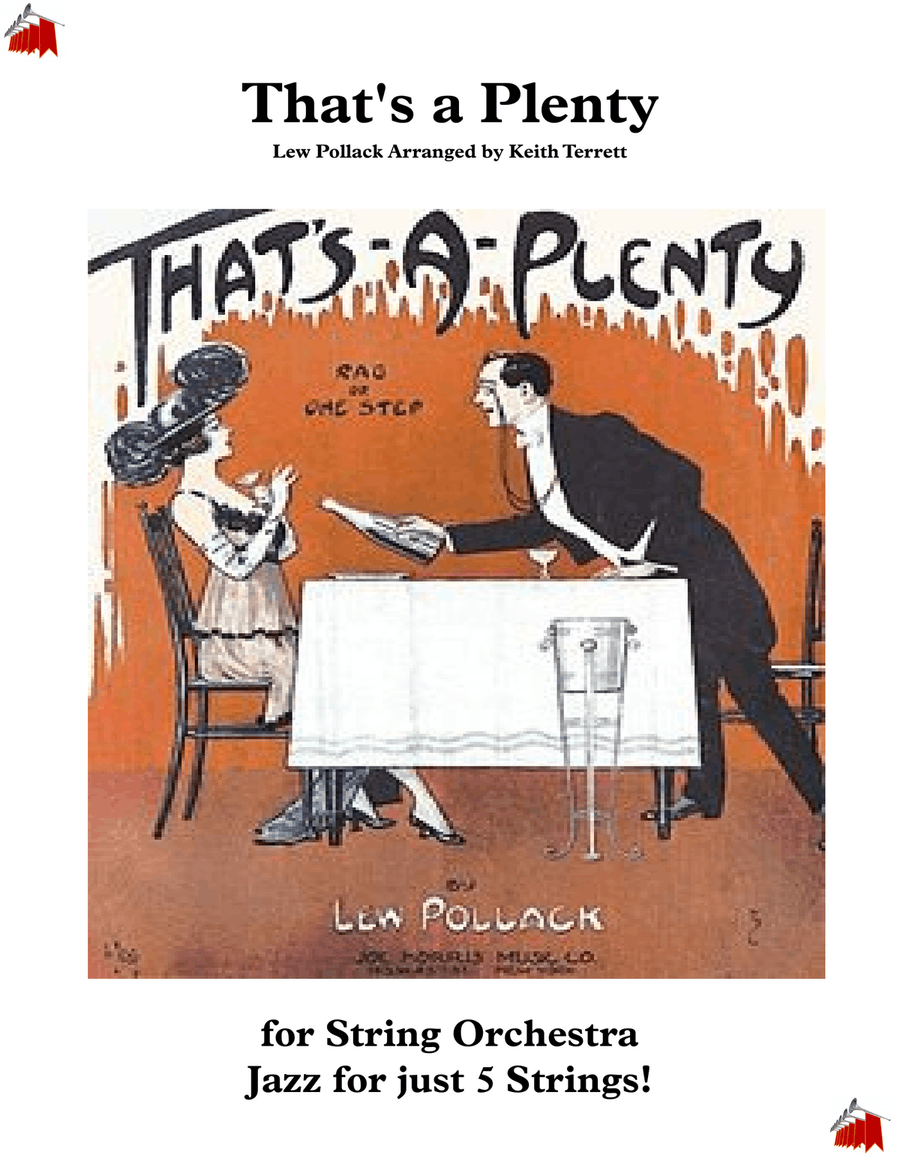String Orchestra - Level 3 - Digital Download SKU: A0.746694 Composed by Lew Pollack. Arranged by Keith Terrett. 20th Century,Folk,Jazz,Traditional. 26 pages. Keith Terrett #2856819. Published by Keith Terrett (A0.746694). Arrangement of That's a Plenty for String Orchestra. That’s a Plenty arranged for String Orchestra, is a 1914 ragtime piano piece composed by Lew Pollack. Lyrics by Ray Gilbert (born 1912) were added decades later. A number of popular vocal versions have been recorded, but the tune remains more performed as an instrumental. The composition started out as a rag, but is nowadays played as a part of the Dixieland jazz repertoire. The song has been recorded by numerous artists, and it is considered a jazz standard. The first recording was in 1917 by Prince’s Band, and the New Orleans Rhythm Kings recorded their rendition in 1923.Television comedian Jackie Gleason used it in his shows in the 1950s and 1960s. Among the hundreds of later recordings of this standard, particularly notable versions include: Freddy Martin and His Orchestra recorded a version of That’s A Plenty in 1950. Sheet music from the 1950 version featuring Freddy Martin on the cover has the lyrics printed inside. It was recorded by Albert Nicholas, clarinet, with The Big Chief Jazz Band in Oslo on August 29, 1955. Released on the 78 rpm record Philips P 53038. The Pollack and Gilbert song is not to be confused with a 1909 song of the same name by Henry Creamer and Bert Williams. For more of my original music, great arrangements and all the national anthems of the world, check out my on-line stores: http://www.scoreexchange.com/profiles/keith_terret http://musicforalloccasions.org.uk http://www.sheetmusicplus.com/search?Ntt=keith+terrett Need an anthem fast? They are ALL in my store! All my anthem arrangements are also available for Orchestra, Recorders, Saxophones, Wind, Brass and Flexible band. If you need an anthem urgently for an instrumentation not in my store, let me know via e-mail, and I will arrange it for you FOC if possible! keithterrett@gmail.com If you perform this arrangement in public, make a recording or broadcast it through any media, please notify the PRS (UK), or ASCAP (USA), or SOCAN (Canada), or APRA (Australia) or KODA (Denmark) or the equivalent organisation in your own country, giving the name of the arranger as Keith Terrett.
